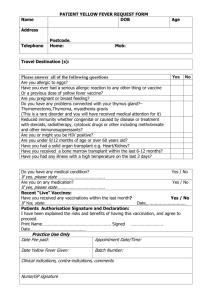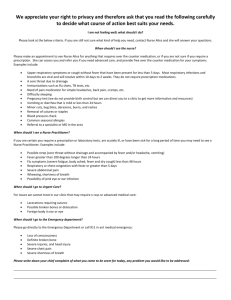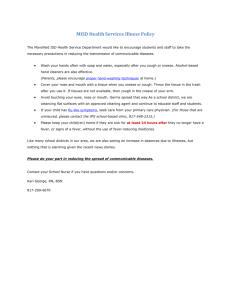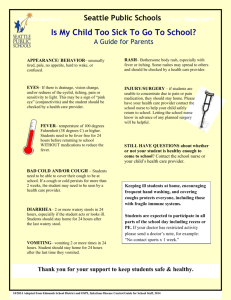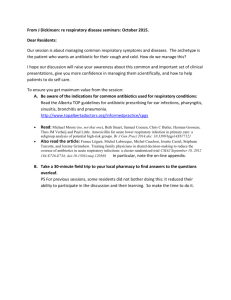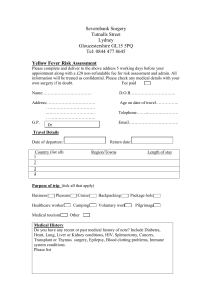Respiratory diseases - Academic Resources at Missouri Western
advertisement
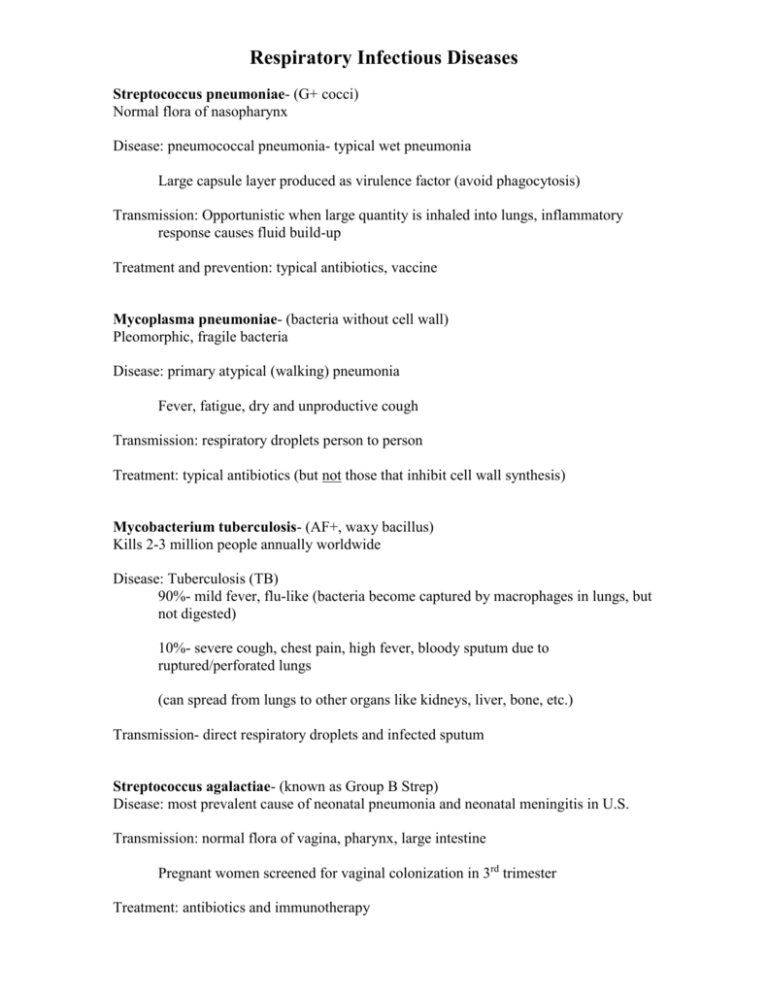
Respiratory Infectious Diseases Streptococcus pneumoniae- (G+ cocci) Normal flora of nasopharynx Disease: pneumococcal pneumonia- typical wet pneumonia Large capsule layer produced as virulence factor (avoid phagocytosis) Transmission: Opportunistic when large quantity is inhaled into lungs, inflammatory response causes fluid build-up Treatment and prevention: typical antibiotics, vaccine Mycoplasma pneumoniae- (bacteria without cell wall) Pleomorphic, fragile bacteria Disease: primary atypical (walking) pneumonia Fever, fatigue, dry and unproductive cough Transmission: respiratory droplets person to person Treatment: typical antibiotics (but not those that inhibit cell wall synthesis) Mycobacterium tuberculosis- (AF+, waxy bacillus) Kills 2-3 million people annually worldwide Disease: Tuberculosis (TB) 90%- mild fever, flu-like (bacteria become captured by macrophages in lungs, but not digested) 10%- severe cough, chest pain, high fever, bloody sputum due to ruptured/perforated lungs (can spread from lungs to other organs like kidneys, liver, bone, etc.) Transmission- direct respiratory droplets and infected sputum Streptococcus agalactiae- (known as Group B Strep) Disease: most prevalent cause of neonatal pneumonia and neonatal meningitis in U.S. Transmission: normal flora of vagina, pharynx, large intestine Pregnant women screened for vaginal colonization in 3rd trimester Treatment: antibiotics and immunotherapy Streptococcus pyogenes- (Group A Strep) Normal flora of throat, nasopharynx, sometimes skin Virulence: release of toxins, harmful enzymes, damage from strong immune response Transmission: 5-15% population carriers…direct respiratory droplets, food Disease: pharyngitis and tonsillitis (strep throat)- red, enlarged, tender throat, fever, headache, nausea, white pus nodules strep throat can lead to: Scarlet fever- red rash of skin Rheumatic fever- delayed inflammation of joints, subQ tissue, heart causing endocarditis and heart valve damage ____________________________________________________________Also causes: Skin infectionsPyoderma: burning, itchy lesions…contagious yellow crusty skin Erysipelas: red, swollen skin with elevated edges Cellulitis: diffuse, spreading, deep skin infection of subcutaneous, reddened and painful ____________________________________________________________ Bordetella pertussis- (small G- bacilli) Disease: pertussis (whooping cough) 7-10 day incubation, 1-2 weeks non-specific resp symptoms, 2-4 week whooping cough Caused by- attachment to cilia of upper resp tract, produce 5 toxins which increase mucus secretions, inhibit phagocytosis, paralyze cilia Transmission: respiratory droplets, human only known reservoir Treatment and prevention: macrolides (reduce duration, do not eliminate symptoms), vaccine Mumps Virus- (a Paramyxovirus) Disease: mumps (12-25 day onset)- infected salivary glands, swollen cheeks, fever, muscle aches, malaise Complications can be encephalitis, meningitis, swelling of testes or overies, permanent deafness, spontaneous abortion Transmission: (Human only host) saliva and resp droplet direct or by fomite into lungs Prevention: vaccine (in MMR vaccine) Influenza virus- (enveloped RNA) Rapidly mutated virus, many known strains Disease: Flu- rapid onset of fever, fatigue, headache, muscle pain (often complicated by secondary infection) Transmission: respiratory droplets into lungs (humans, pigs, avian all known reservoirs) Treatment and Prevention: Tamaflu™ and vaccine available Respiratory Syncytial Virus- (enveloped RNA) Disease: RSV (viral pneumonia) Most common lower resp infection in children under 2 Causes respiratory cells to fuse (syncytium formation) and lose function Flu-like symptoms in adults Transmission: resp droplets Rhinovirus, Echovirus, Coronavirus, etc. (a big group of naked RNA viruses) Disease: Common Cold- runny nose, cough, mild fever Transmission: resp droplets
